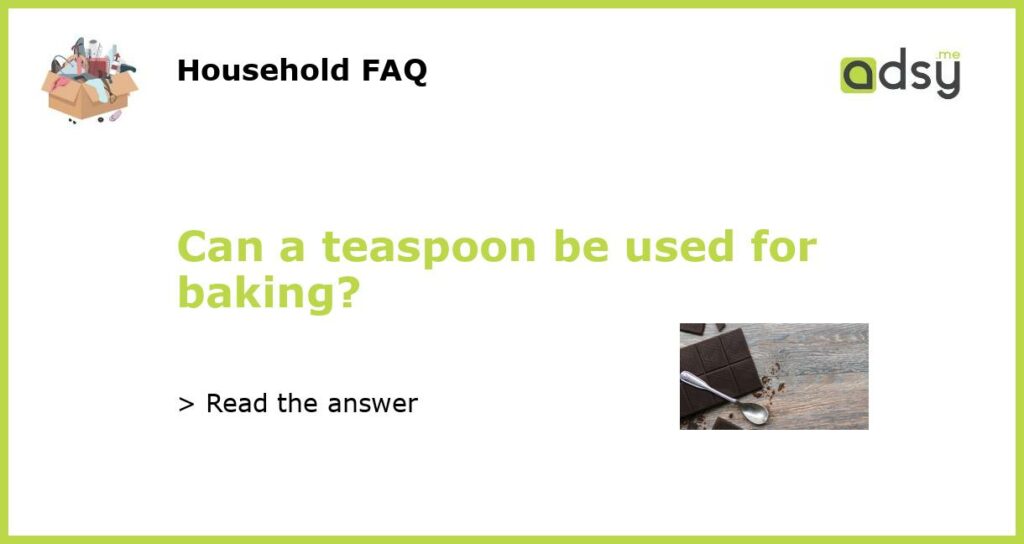Yes, a teaspoon can be used for baking but with limitations
Baking is often seen as a precise science, where exact measurements are required for successful results. Many recipes call for specific measuring tools, such as cups and tablespoons, to ensure accuracy. However, in certain cases, a teaspoon can be used for baking with a few limitations. Let’s explore when and how a teaspoon can be used in baking.
The limitations of using a teaspoon for baking
While a teaspoon can be a handy tool in the kitchen, it has its limitations when it comes to baking. One of the main limitations is its small size. A teaspoon typically holds around 5 milliliters of liquid or powder, which means it may not be suitable for measuring larger quantities accurately.
Another limitation is the lack of versatility. Recipes often call for different measurements, such as 1/4 teaspoon or 1/2 teaspoon. Using only a teaspoon can make it challenging to accurately measure these smaller quantities, as it may be difficult to divide the teaspoon evenly.
Additionally, some recipes require specific measuring tools, such as a tablespoon or a measuring cup, to achieve the desired texture and consistency. Using a teaspoon instead may result in an imbalanced ratio of ingredients, leading to unsatisfactory results.
When can a teaspoon be used for baking?
While there are limitations to using a teaspoon for baking, it can still be used in certain situations.
1. Flavorings and extracts: When adding small amounts of flavorings or extracts to a recipe, such as vanilla or almond extract, a teaspoon can be an appropriate tool. These ingredients are often added in small quantities, ranging from 1/4 teaspoon to 1 teaspoon, and the teaspoon measurement can be used to accurately measure them.
2. Spices: Similar to flavorings and extracts, spices are often used in small quantities. When a recipe calls for a small amount of a spice, such as cinnamon or nutmeg, a teaspoon can be used to measure and add the spice to the mixture.
3. Stirring and mixing: A teaspoon can also be used for stirring and mixing small amounts of ingredients. For example, if a recipe calls for blending a small amount of dry ingredients or liquids, a teaspoon can be used to combine them.
Tips for using a teaspoon in baking
If you decide to use a teaspoon for baking, here are some tips to ensure accurate measurements:
1. Level the teaspoon: To measure ingredients accurately, use the back of a butter knife or a flat utensil to level off the ingredient in the teaspoon. This helps remove any excess and ensures a consistent measurement.
2. Adjust for smaller quantities: If a recipe calls for a fraction of a teaspoon, such as 1/8 or 1/4 teaspoon, you can use a smaller spoon, such as a 1/4 teaspoon, to divide the measurement more precisely.
3. Be mindful of ingredients with different densities: Some ingredients, such as flour and sugar, have different densities, which can affect the measurement. When using a teaspoon, be aware of these differences and adjust accordingly to achieve accurate results.
In conclusion
While a teaspoon can be used for baking in certain situations, it has limitations due to its small size and lack of versatility. It is best to have a variety of measuring tools, such as cups, tablespoons, and teaspoons, to ensure accurate measurements in baking. However, for small quantities of flavorings, extracts, spices, and stirring/mixing purposes, a teaspoon can be a useful tool to have in the kitchen.






